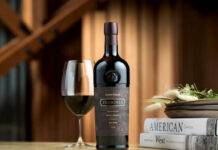Customers and staff alike are looking for provenance
PROVENANCE has become somewhat of a watchword in the Scottish on-trade, with a spike in interest from customers and staff alike.

Once the sole province of food, provenance has become an equally important factor for drinks products, with consumers said to be taking more of an interest in the stories and heritage behind the label.
And operators who source the right products can cash in on this growing trend, drinks firms told SLTN.
Scottish consumers “are very patriotic when it comes to the brands they choose”, said Claire Arnott, head of brand activation at Tennent’s.
“Provenance is an important factor for consumers – we like to support our own by choosing local and knowing the story behind the drink. It’s this attitude to Scottish brands that’s helped the growth of the small-batch spirits and locally-produced beer categories.”
Scotland has always had a strong heritage of distilling and brewing.
Neil Boyd, commercial director for Ian Macleod Distillers, which counts Edinburgh Gin and Tamdhu whisky within its stable, reckons Scotland’s heritage lends itself well to the growing demand for products that offer consumers real provenance.
“Scotland has always had a strong heritage of distilling and brewing, and this, combined with the appeal of Scottish food and drink produce in the last few years, has given consumers a real trust of Scottish-produced alcoholic drinks,” said Boyd.
“Those looking for something a bit different or interesting to drink have turned to local producers, be it beer, or spirits, to sample something that has been made in Scotland.”
Keen to tap into this consumer trend, pubs, bars and hotels across the country “are scouting for brands with provenance and a story to list behind their bars,” said Boyd.
And bar staff are keen to source smaller, interesting brands and brush up on their knowledge of local, craft drinks that allow them to confidently inform curious customers, reckons Boyd.
“Working with smaller, more interesting brands, bartenders and managers want the opportunity to discover something new of high quality and superb taste,” he said.
“They also want to know about the products and learn how to use them.
“They want to go and visit the breweries and distillers to see how the product is made and learn more about the ingredients used.”
With product knowledge so important, several drinks firms offer their own training and tours.
Jo Stewart, co-founder of Stewart Brewing, said: “It is always important to us [that] our customers can see where the beer is made and meet the team who are behind the brands.”
It’s also vital to unlocking further sales, according to Arnott of Tennent’s, who said “trained bartenders have the ability to make informed recommendations to consumers and up-sell new products or drinks at a higher price point”.
For operators who are in doubt about the relevance or demand for provenance from their customers, and their business, Arnott of Tennent’s reckons the demand “transcends outlet type”, as she believes “customers appreciate local products no matter what type of pub they’re in”.
“One key element to running a successful outlet is to stock a broad range of products as choice is an important factor for [the] pub-goer,” she said.
“Operators should make sure customers are met with a great selection of Scottish drinks to choose from.”
But what products should operators consider stocking?
Arnott recommended a spread of beer, wine and spirit options in order “to cater for as wide a variety of consumer tastes as possible”.
Gin continues to move from strength to strength in the on-trade, according to Faith Holland, Diageo GB’s head of category development, who said the category “continues to thrive, with the craft and heritage of brands becoming increasingly important”.
Boyd of Ian Macleod Distillers, agreed. He said that “with the growing popularity of Scottish gins”, consumers now “expect to find a solid selection of Scottish gins stocked at their local bar”.
The gin boom mirrors the whisky category, according to Boyd, in that the demand for gins from different regions is similar to the expectation of an outlet’s whisky range.
The demand for a range of gins mirrors the demand within single malt Scotch.
“This demand for a range of gins, from geographic regions to flavour profiles, mirrors the demand within the single malt Scotch whisky category,” he said.
“There is an expectation by consumers of bars, restaurants and hotels to carry a range of malts to represent the five whisky-producing regions of Scotland.
“There is a perception that the higher number of malt whiskies stocked by a bar, the more authentic and knowledgeable that bar is about single malt.”
Craft beer remains in demand, according to Andrew Chapman of Keith Brewery, who reckons “there’s still scope for more Scottish brands to enter the market for as long as the specific markets continue to grow”.
Pairing locally-sourced food and drink can also help to boost sales, said Chapman.
“With more outlets focusing on the best local produce when creating their food menus, the importance of matching these dishes with a local or Scottish drink has also increased,” he said.
Echoing this view, Arnott of Tennent’s added that pairing dishes can “create a real talking point for consumers recommending friends on where to eat and drink”.
Looking at the year ahead, Chapman of Keith Brewery said “demand will continue to grow for Scottish drinks brands”, and Boyd of Ian Macleod Distillers foresees an evolution and expansion of local brands seen in the on-trade.



















